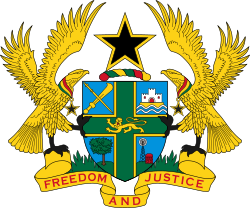Previous regional configurations
Independence - 6 March 1957
At independence in March 1957, the Northern Territories, Ashanti, Trans-Volta Togoland and the Gold Coast came together to form Ghana. There were initially five regions. The Trans-Volta Togoland was combined with part of the Eastern Region and Northern Territories to form the Volta Region.
[5] [6]
Post-independence and First Republic
On 4 April 1959, the Ashanti Region was split into the Ashanti and Brong-Ahafo regions as a result of the Brong Ahafo Region Act No. 18 of 1959. [7] This was in line with what the Brong Kyempem movement had been campaigning for, which was the recognition of the Bono people as a separate ethnic group from the Ashantis with their own region. [5]
On the day Ghana became a republic, 1 July 1960, the Northern Region got split into the Northern and Upper regions raising the number of regions to seven. [5] [7]
Second Republic
During the Second Republic, the Western Region was split into the Western and Central regions, making eight regions in total. This was done ahead of the 1970 census. In 1971, Sekondi and Takoradi were merged to form Sekondi-Takoradi, the new capital of the Western Region. [5] [6]
PNDC era
The Provisional National Defence Council, which was the military government in power between 1981 and 1993, promulgated the Greater Accra Law (PNDCL 26) of 23 July 1982 which created the Greater Accra Region. The new region consisted of the Accra Capital District and the Ada Local Council, which were split off from the Eastern Region. In the following year 1983, the Upper Region was divided into the Upper East Region and Upper West Region, bringing the total number of regions to ten. [6] [7]
This page is based on this
Wikipedia article Text is available under the
CC BY-SA 4.0 license; additional terms may apply.
Images, videos and audio are available under their respective licenses.


